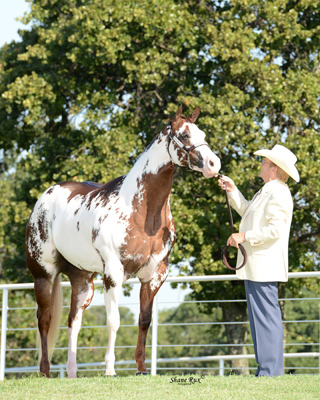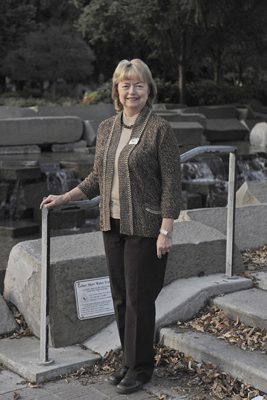 If it’s possible for the industry to hold its collective breath all at once, news of changes to the American Paint Horse Association’s Breeders’ Trust program coming down the pike could have triggered the pause.
If it’s possible for the industry to hold its collective breath all at once, news of changes to the American Paint Horse Association’s Breeders’ Trust program coming down the pike could have triggered the pause.
It’s no secret the horse industry has been affected by the economy like everything else over the past few years, with breeding incentive programs experiencing changes alongside dipping registration numbers, which left associations scrambling for solutions. Some breed association transformations were sweeping and swift in an attempt to ward off disaster, drawing extreme praise and criticism alike.
So speculation grew surrounding what APHA’s pending solution might be, since it was time for a change. When APHA announced in August that a $100 one-time re-enrollment fee per transfer would be assessed to each new owner of a Breeders’ Trust horse at time of transfer, with no extra fees for the stallion owner or nominator, most APHA fans felt relief.
“This move now puts skin in the game for all of the participants–breeders, nominators and owners. All will have a personal stake in the Breeders’ Trust,” emphasizes APHA President Mary Parrott. “It also fortifies a financing mechanism that will keep the Breeders’ Trust healthy well into the future. In the end all participants win.”

Fred Tabor, legendary APHA trainer and breeder at Tabor Ranch
The Good Stuff
Since its establishment in 1994, the Breeders’ Trust has been a feather in the cap for APHA breeders and owners alike because of the potential for value and for payback, especially when it comes to breeding and marketing horses.
For Breeders and trainers Brent and Julie Harnish, owners of Gentlemen Send Roses, the APHA Top 4 Leading Sire, the program adds real value.
“As a breeder it makes people seek out our horses and hopefully come to the breeder to purchase. Marketing a horse as Breeders’ Trust has always been a part of the whole package of what a buyer is receiving with their purchase,” the South Bend, Indiana, residents explain.
Fred Tabor, legendary APHA trainer and breeder at Tabor Ranch of Aubrey, Texas, says Breeders’ Trust has been instrumental to his program.
“I can tell you in marketing horses, especially young horses like yearlings and weanlings, the first question I’m asked is if the horse is enrolled in Breeders’ Trust; it has been a very positive influence on marketing horses overall.”
Why Change Was Imminent
Even though Breeders’ Trust is still paying out, intervention for the future was clearly needed based on numbers. The actual statistics of each year’s payouts are posted on APHA’s website, revealing a clear dip in payouts and income since 1994.
APHA Director of Breeders’ Trust Steven Imhof says the slight modification to the program that will become effective in 2015 was based on analysis of those past statistics and as well as future projections.

APHA Director of Breeders’ Trust Steven Imhof
“With the decline we’ve seen in Breeders’ Trust funds available for distribution, it was obvious that something should be done to help generate more money for the program. Since the horse owner was not being assessed a fee to participate, it was logical to ask them to contribute to the Trust since they are the largest beneficiary at payout time,” says Imhof.
“The Breeders Trust Program model was built in an entirely different time, when breeding trends throughout the industry reflected significantly higher numbers than today,” adds Kelly Boles Chapman of Battle Creek, Michigan, a trainer, show parent, and multiple-carded judge who sees the industry from several sides. “Any good business has to stay in tune to changes in its respective industry. APHA is no different. Clearly, people are not breeding as many horses as they were 15 or 20 years ago.
The Reaction
Chapman thinks the decision by APHA to include owners in the Breeders’ Trust financing is positive, since indicators also demonstrate that although breeding statistics have changed, show entries are static or increasing.
“As far as affecting owners only, this was a move that makes good sense,” she says. “Think about it: the mare owner and stallion owner have the entire financial responsibility to enroll each foal (through the foal enrollment and stallion enrollment fees, respectively) in the program, yet only receive a small percentage of the financial yield.”
Tabor agrees that the change is logical, noting that he still sees Breeders’ Trust as an essential sale point, even with the potential $100 fee at transfer.
“It will be more positive than negative for a sale in my opinion. $100 is not going to break a sale on a horse,” he says. “No one likes to see prices increase, but this is a case of stallion owners not coming into Breeders’ Trust as rapidly as we hoped they would. Put simply, the point dollars have shrunk in value and this is a way to build it. Breeders’ Trust has created excitement for people to go show and earn points, and it will continue to do so.”

Kelly Boles Chapman of Battle Creek, Michigan, a trainer, show parent, and multiple-carded judge
Paths To The Future
Brent and Julie Harnish boast many years of breeding knowledge, and Brent experiences the industry as a multiple-carded judge. The couple has additional ideas for the future to positively grow the fund and available horses to increase the value of the program, and return the significance of Breeders’ Trust to the stallion owners for the future.
They suggests integrating the youth more fully into the program to assure growth, as well as asking for a firmer commitment from all participants with an annual nomination for all horses.
“As both breeders and trainers who have hauled many youth and amateurs down the road, we feel that we are truly missing a market by not allowing youth to earn some of the Breeders’ Trust money. If the youth had to nominate an annual fee, like the amateurs, it immediately adds to the available funds. Yearly nomination would allow someone to sit out a year if they are taking a year off or the horse can’t be shown but come back the following year and again participate. Stallion owners and breeders would see the value to participate, now both youth and amateurs would be looking for Breeders Trust horses. Perpetuating growth from the bottom up is a win-win situation for all and looks at the long term stability of the show horse industry.”

APHA President Mary Parrott
Chapman sees expansion in the future for APHA as well: “I believe there is potential to evolve the program to the point that people seek out those Breeders Trust horses, and more breeders will engage in the program’s success. The opportunities and potential are great to continue to build a program that appeals to our target population. There are many other things people can do with their recreational dollars and time – keeping horse-showing fun and appealing is imperative. When they get a Breeders’ Trust check, it’s often a pleasant surprise that they can get a little payback from a sport they enjoy.”
To Tabor, the greatest goal is to have every APHA stallion involved in Breeders’ Trust.
“I would like to see when we file our stallion breeders’ report that every stallion enrolls. The entry into the Breeders’ Trust could probably be lowered to $150 a stallion and this would allow everyone to be on a level playing field, because everybody could get in. It would make everybody’s baby be able to win money. Many stallion owners can’t currently justify paying the price of their listed stud fee, but if all were involved, the fees could be lowered. That would also raise and almost double money available for point earners. That’s what I would like to see –all the stallion owners having a breeder’s trust stallion.”
Whether APHA’s adjustment to the fee structure of Breeders’ Trust is enough, time will only tell. Imhof stresses the significance of the program, and its members, to APHA: “Stallion subscribers are the key to the program. Without their participation, there are no nominated foals. A Breeders’ Trust nominated horse is still much easier to sell than a non-Breeder’ Trust horse which is proof that the program is still fulfilling its intent to increase a Paint Horse’s market value,” he explains.
“As evidenced by this modification, we will continue to work with our members in an effort to keep a program as important as the Breeders’ Trust successful,” says Imhof. The success of the Breeders’ Trust program is very important to the Executive Committee and this action reflects their dedication to keeping the program strong.”



You must be logged in to post a comment Login